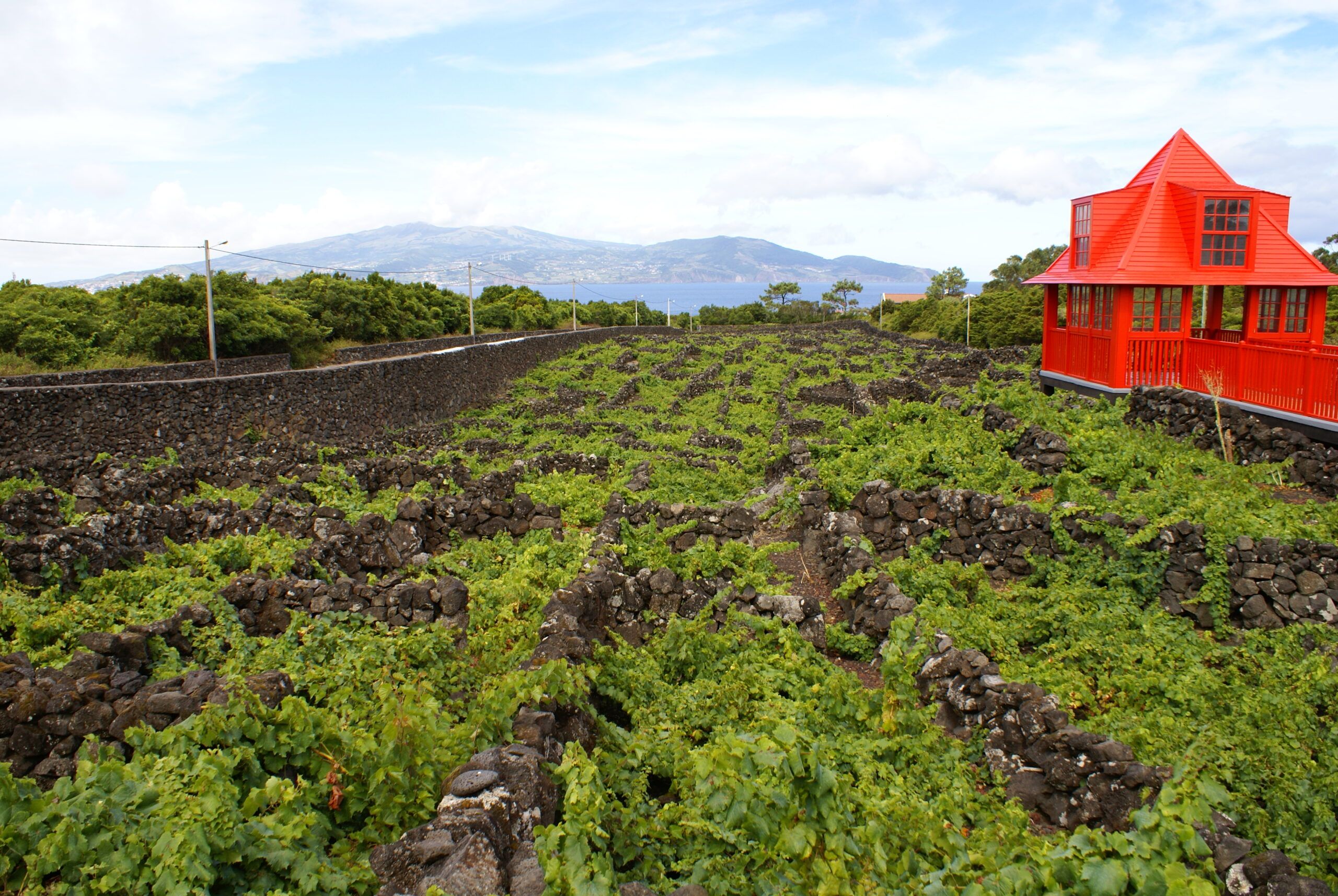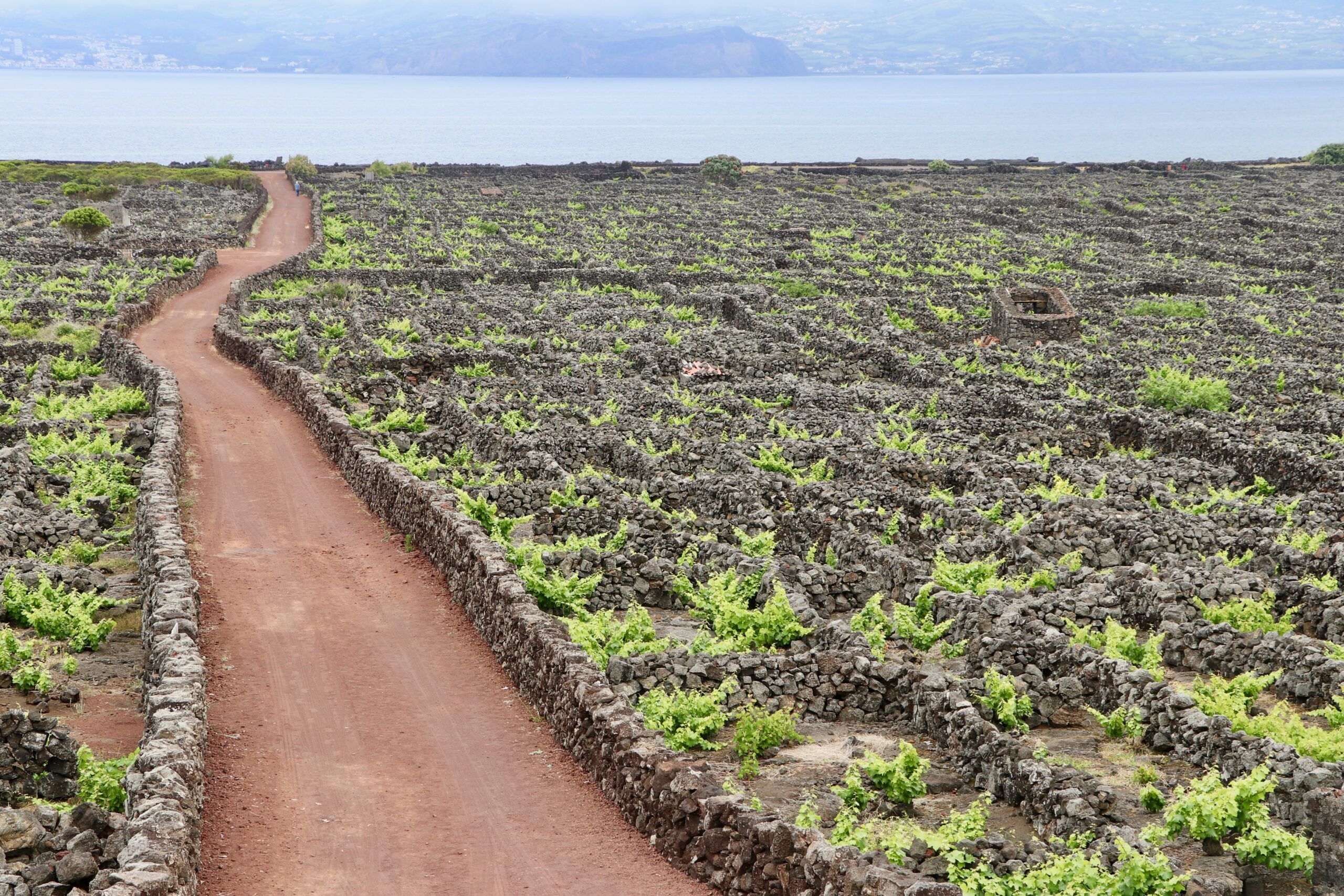Landscape of the Pico Island Vineyard Culture
Categories/tags: Drystone terracing in agriculture.
Historical context: Nestled amidst the idyllic Azores Islands archipelago of Portugal, Pico Island stands as a hidden gem for wine enthusiasts and sommeliers alike. While Portugal is renowned for its world-famous wine regions like the Douro, the Alentejo, and the Vinho Verde, the revelation of Pico Island’s locally grown and harvested wine blends surprises even the keenest wine connoisseurs. Despite its diminutive size, this tiny island off the coast of Portugal boasts wines that rival any of its more famous counterparts.
What truly sets Pico Island apart is its designation as an official UNESCO World Heritage Site, owing to its extraordinary vineyard landscape. The moment one sets foot on Pico Island and witnesses the meticulously organized vineyards amidst breathtaking scene-scapes, the island’s historical and present acclaim becomes unmistakably evident.
Unlike the typical growing conditions of most wine regions, Pico Island presents a unique environment that would be considered hostile for viticulture. Situated on a volcanic island with soil rich in volcanic minerals, Pico’s landscape poses challenges for grape cultivation. However, the ingenuity and perseverance of the Portuguese locals prevailed, as they devised innovative methods to cultivate and harvest grapes, transforming them into wines that are now coveted worldwide.
The remarkable success of Pico Island’s viticulture is a testament to human resilience and adaptability. Despite the inhospitable terrain, Pico’s winemakers have defied the odds, harnessing the unique characteristics of the volcanic soil to produce wines of exceptional quality and distinction. Today, Pico Island’s wines are celebrated for their unparalleled flavor profiles, reflecting the island’s rich terroir and centuries-old winemaking tradition.
Form – main architectural features: The Landscape of the Pico Island Vineyard Culture is defined by a network of black basalt stone walls that run parallel to the coast and extend inland. These walls, developed over 500 years, shape the landscape and create terraced vineyards. The unique terrain and construction of these walls demonstrate the islanders’ ability to adapt to challenging natural conditions.
Function: Primarily, the Landscape of the Pico Island Vineyard Culture serves as a platform for viticulture. The black basalt stone walls act as windbreaks, protecting the vineyards from harsh coastal winds and creating microclimates conducive to grape cultivation. Additionally, the terraced layout optimizes land use on the island’s rugged terrain, allowing for efficient grape production.
Lessons for sustainability: The landscape offers valuable lessons in sustainability, showcasing the effectiveness of traditional farming practices in adapting to natural conditions. Despite the volcanic soil and maritime climate, the vineyard culture has sustained itself for centuries, demonstrating the resilience of environmentally conscious agriculture.
Cultural heritage and tourism: Designated as a UNESCO World Heritage Site in 2004, the Landscape of the Pico Island Vineyard Culture is a significant cultural heritage site. It attracts tourists and wine enthusiasts from around the world, drawn to its scenic beauty and historical significance. Visitors can explore the terraced vineyards, sample locally produced wines, and learn about the rich viticultural traditions that have shaped the identity of Pico Island. Additionally, the island’s whaling history, although now forbidden, adds to its cultural allure, with the Azores being recognized as one of the best places in the world for whale watching.
Location: Ilha do Pico, Açores – PORTUGAL
Landscape of the Pico Island Vineyard Culture (Azores) – Portugal
Sources
Paisagem da Cultura da Vinha da Ilha do Pico. (2006, November 6). In Wikipedia. https://pt.wikipedia.org/w/index.php?title=Paisagem_da_Cultura_da_Vinha_da_Ilha_do_Pico&action=history
Regional Government of Azores (2018-2019). Landscape of the Pico Island Vineyard Culture. Retrieved July 28th, 2023, from: https://rm.coe.int/council-of-europe-european-landscape-convention-landscape-award-sessio/168092df53
UNESCO (2004). Landscape of the Pico Island Vineyard Culture. Retrieved July 28th, 2023, from https://whc.unesco.org/en/list/1117/



